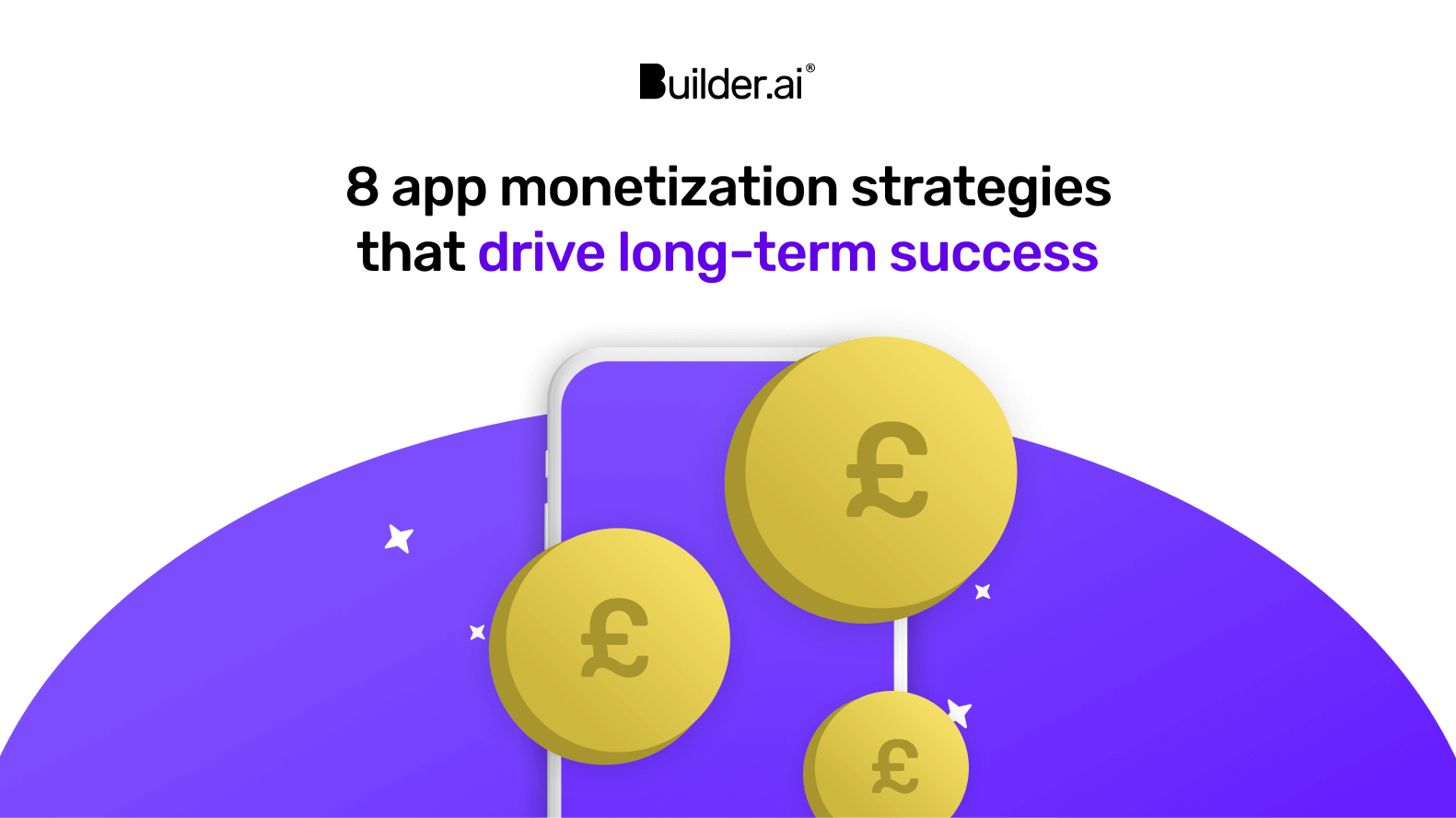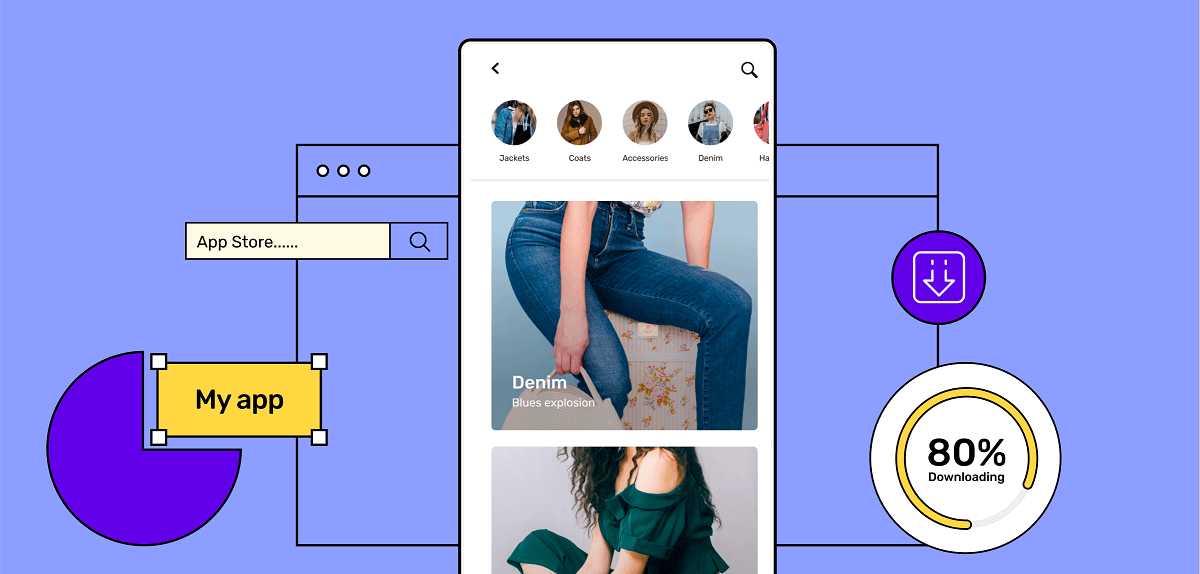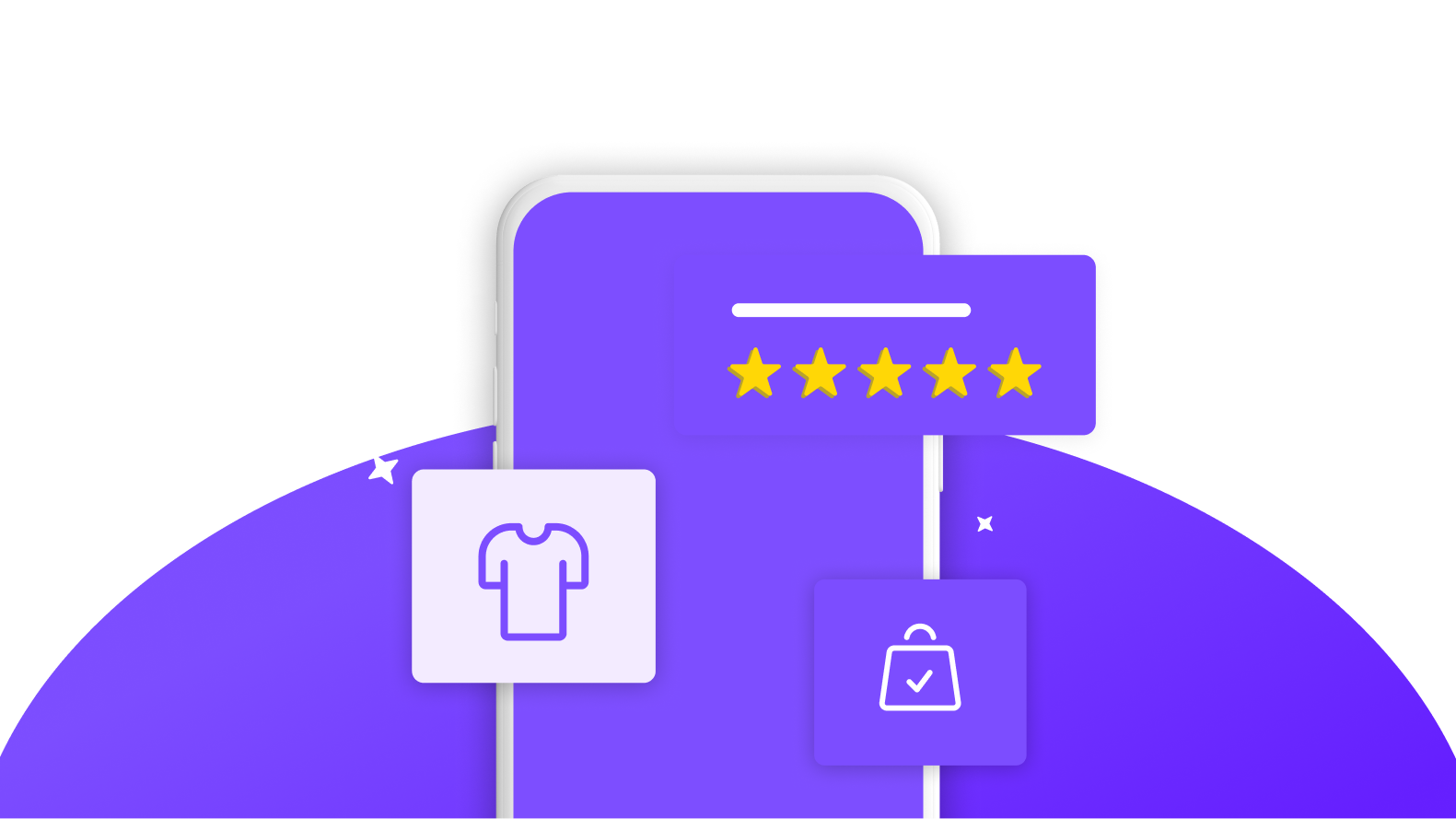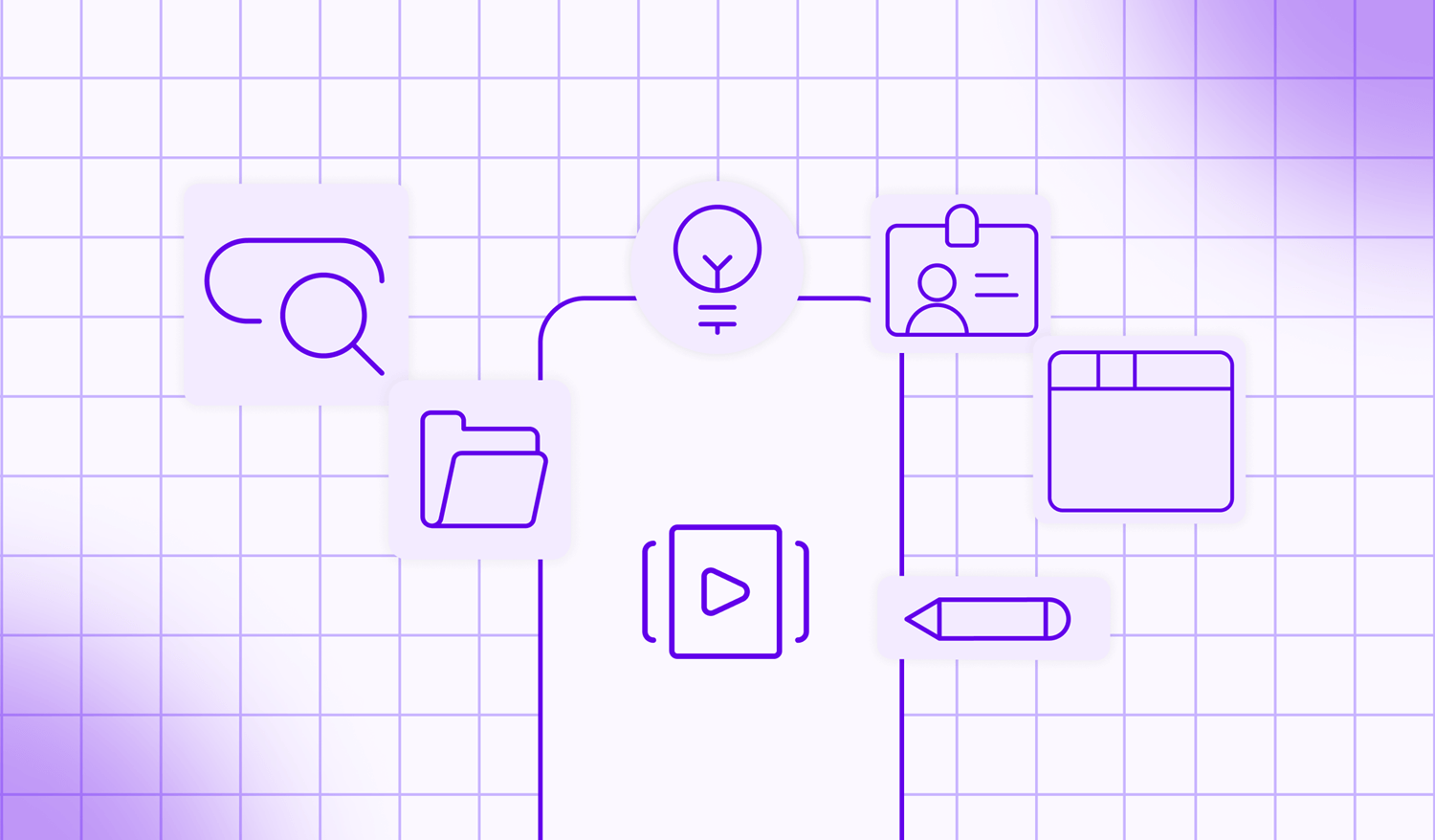Anyone can make money through their app when it first launches – but the goodwill of your nearest and dearest only lasts so long.
That means you need to invest in strategies that’ll generate revenue for your business in the long term.
Enter app monetization.
Even if you don’t directly sell products or services, app monetization opens up a range of revenue streams for your business, not only allowing you to cover the costs of building your app, but also to turn a profit.
In this blog, I’ll be exploring the pros and cons of key app monetization strategies. I’ll also reveal:
- Key metrics you can use to track their success
- How different models can complement each other
- How not to overuse certain models and annoy your users
Let’s get started 👇
What is app monetization?
App monetization is the process of using an app to generate revenue. There are a number of ways app owners can achieve this, including in-app purchases and advertising, subscription models, paid downloads or a combination of several of these options.
Why is app monetization important?
Ultimately, monetization allows app owners to get a return on their investment. This makes the business case for them sustainable and justifies their development and maintenance costs. Depending on the strategy you use, app monetization can help to deliver richer user experiences, enhancing customer loyalty.
For example, say a small business owner is getting lots of value from the free version of a project management tool and they recognise the opportunity to improve efficiency across their organisation. By upgrading to the paid version of the app, they can give their whole team access, who can all collaborate without restrictions.
As a result, they can manage projects more effectively and spend more time on strategic tasks.
When do you need to think about monetizing your app?
To give your app the best chance of success, it’s ideal to finalise your chosen monetization strategy (or strategies) before the app development process begins. This is because the option you choose will impact your app’s:
- Design
- Functionality
- Cost
Of course, you can also add monetization features to an existing app, but your ability to generate revenue will be slightly delayed.
Breaking down the 8 main app monetization strategies

Below, you can see a list of the best app monetization strategies out there. Either explore all of them or the ones most relevant to your company:
1 - Freemium

Freemium is a popular software-as-a-service (SaaS) monetization strategy that can also be applied to apps.
Put simply, it allows anyone to access your app’s basic features for free, with the aim of providing enough value to entice some of those users to pay for premium features on monthly subscription fee packages.
Popular examples of apps operating on a freemium model include LinkedIn, YouTube and Tinder, all of which have huge user bases.
This isn't to say smaller companies can't be successful with this strategy, but they need to be mindful of the number of free app users they can convert into paying customers and whether or not this makes financial sense.
Review the full pros and cons below 👇
Pros | Cons |
✅ - Allows users to try before they buy, growing your user base | ❌ - Even though the majority of your users don’t pay, you still have to dedicate time, money and resources to them, which burns cash quickly |
✅ - No initial cost barrier means you have a bigger pool of potential users to convert into paying customers | ❌ - The bigger your user base, the higher your infrastructure costs are |
✅ - Freedom to offer tiered pricing allows you to entice free users with a range of packages to suit different budgets | ❌ - You may experience a high churn rate as customers reap the benefits of your free offering before leaving |
✅ - You can generate a ton of ad revenue from your free users if you opt for a hybrid approach, blending freemium with in-app advertising |
Key metrics to track
The key to successful freemium apps is stability, which means a steady increase of paying users month on month. Here are the numbers you need to be aware of to measure your progress:
- Monthly conversion rate of free users into paying customers
- Retention rate of paid users
- Daily active users (DAU) and monthly active users (MAU)
- Monthly recurring revenue (MRR)
- Average revenue per user (ARPU)
My verdict
With 12% of US apps opting for in-app billing, Freemium is a popular app monetization strategy that removes barriers to entry, allowing those who use it to increase downloads as well as reach.
This said, the Freemium model relies on an effective product-led growth strategy, which may take time to pay dividends. To ensure you don’t go without revenue in the short to medium term, your safest bet is to supplement Freemium with in-app advertising.
2 - Paymium

Paymium is a monetization strategy that works as a combination of freemium and paid models. This means your users initially need to pay to download your app and also have the option of buying additional features or content afterwards.
Popular apps following this strategy are Adobe Creative Cloud and Monopoly, both of which provide unique services that app users are willing to pay for upfront.
It’s important to note that selling a paid app and, at the same time, offering paid features can cause negative user experiences, as users may perceive it as double charging.
Pros | Cons |
✅ - Provides recurring revenue | ❌ - Repeated payments can alienate users |
✅ - As downloads aren’t your only revenue stream, the initial download price can be reduced | ❌ - You need lots of brand authority to leverage it |
Key metrics to track
The key to implementing a successful paymium model is striking a balance between cost and features. To do that you need to focus on user behaviour and engagement. Here are the numbers you need to be aware of to measure your progress:
- Feature adoption rate
- Churn rate of paying subscribers
- Customer acquisition cost (CAC)
- Customer lifetime value (CLV)
Expert verdict
Paymium is one of the rarer app monetization models – and for good reason. Only brands that users inherently trust can get away with charging users twice.
If your business falls into this category, you’ll need to use in-app purchases sparingly, suggesting them to users on when they truly offer value.
Alternatively, if your business doesn’t fit into this category, you should treat Paymium with caution. Instead, you could think about using the Freemium model and supplementing it with both in-app advertising and in-app purchases.
3 - In-app purchases (IAPs)

In-app purchases are transactions made within a mobile app. In this strategy, you offer your users the opportunity to buy extra features, content or virtual goods to enhance their experience with the app. For instance, they can upgrade to a premium version of the app, remove advertisements, unlock new features or subscribe to premium content.
IAPs have become a go-to monetization strategy for many apps, especially considering the staggering $171 billion in consumer mobile app spending in 2023 alone. They can be split into three distinct categories: consumable, non-consumable and subscriptions.
Consumable IAPs allow customers to buy and use products on a one-off basis, like a coat, a pizza or a cab ride. This makes it ideal for ecommerce companies like ASOS, food delivery companies like Just Eat and ride-hailing companies like Uber.
Non-consumable IAPs are permanent purchases that allow customers to pay one-time fees to access extra features and retain them, including ad removal, filters, avatar outfits and bonus levels. This works best for gaming apps like Clash of Clans and Candy Crush.
Subscriptions are in-app purchases where users pay a recurring fee at regular intervals to access premium content and features within the app. This works best for exclusive content like Netflix and Amazon Prime.
See the full pros and cons below 👇
Pros | Cons |
✅ - Remove barriers to downloading apps while retaining revenue-generating potential | ❌ - It costs more to develop apps with in-app purchase functionality |
✅ - Enhance user experience by offering additional functionalities | ❌ - You need a high-performing app and trust in your brand to generate in-app purchases at scale |
✅ - Encourage continuous engagement with your app through new features and exclusive items | |
✅ - Flexible, with both consumable and non-consumable options to leverage |
Key metrics to track
For users to make IAPs, their app experience has to be faultless. That’s why the metrics you track should focus on engagement, as you can see below:
- Daily active users (DAU) and monthly active users (MAU)
- Purchase frequency
- Retention rate
- Stickiness ratio
- Average revenue per user (ARPU)
Expert verdict
In-app purchases are a flexible monetization strategy that apps of a wide range of different shapes and sizes can use effectively.
To ensure your business falls into this category, use IAPs to keep users on their toes, regularly releasing new and exclusive features.
And above all, view them as a way to enhance user experiences first and a revenue generator second.
4 - Pay per download (PPD)

An oldie but a goodie, PPD is still a viable option for a select few apps. And it means exactly what you think it would:
Users pay upfront for your app.
Only between 3% - 6% of apps on major platforms do this though, so what you offer had better be worth it.
That’s why the strategy is best suited to companies with more of a specialist focus. For example, the Driving Test Theory app is one of the most downloaded PPD apps in the UK, as is the Squeezy NHS Pelvic Floor app.
Here are the pros and cons you need to know about 👇
Pros | Cons |
✅ - You get money up front, meaning there’s a guarantee of some ROI | ❌ - Potential users may be put off from downloading your app due to the cost barrier |
✅ - If you deliver value for money, you’ll benefit from higher loyalty and retention rates | ❌ - You need to spend more on development to deliver the sophisticated features paying customers demand |
✅ - You can position yourself as a premium option on mobile app stores | ❌ - You may be limited to a single revenue stream as paying customers expect ad-free environments and all features up front |
Key metrics to track
As a PPD app, you need to closely monitor your conversion rates in app stores and understand the best channels for driving app downloads. You can do this with the following:
- Number of downloads
- Click to install (CTI)
- Organic instals (OI) vs non-organic instals (NOI)
- Customer acquisition cost (CAC)
- Retention rate of paid users
- User reviews and ratings
Expert verdict
Paid apps are few and far between on app stores because users expect to be able to try before they buy.
As a result, app monetization strategies like Freemium and IAP are typically your best bet.
That said, if your audience research uncovers that there is a willingness to pay upfront for your app, it’s something you could pursue.
Just make sure you knock it out of the park when it comes to your app design and the functionalities you offer.
5 - In-app advertising (IAA)

The use cases for in-app advertising are twofold.
Basic mobile games and tools apps may use display ads as their sole form of income because they can charge advertisers per click, impression and users acquired.
But perhaps the best use case for IAA is as a supplementary model for apps operating on a Freemium model or ones relying on in-app purchases.
That’s because it gives app owners the ability to make money from their free users without worrying about converting a high percentage of them.
Here are the upsides and downsides of this strategy in full 👇
Pros | Cons |
✅ - The larger and more relevant your captive audience, the more you can charge advertisers | ❌ - Even discreet banner apps can disrupt the user experience, making freemium conversions or IAPs less likely |
✅ - You can choose to permit a variety of ad types in your app, including banner ads, video ads full-screen ads and interstitial ads | ❌ - Ads displayed in your app may not align with your brand values, which could lead to your audience losing trust and uninstalling |
Key metrics to track
The key IAA metrics you should focus on are the rates you charge advertisers to appear in your app, which will be determined by your daily and monthly active users. They include:
- Impressions
- Daily active users (DAU) and monthly active users (MAU)
- Fill rate
- Click-through rate (CTR)
- Cost per thousand impressions (CPM)
- Cost per click (CPC)
- Cost per install (CPI)
Expert verdict
The beauty of in-app advertising is that basically any app can use it to offset app development costs, with 32% of apps already leveraging the strategy according to Statista.
To successfully implement IAA, ensure that you prioritise user experience by displaying relevant ads in a non-intrusive way.
Of course, the larger your user base and engagement are, the more money you’ll make.
6 - Partner marketing

Think of partner marketing as a more targeted version of IAA.
Instead of plugging random companies that have nothing to do with your app or industry, you can instead team up with relevant ones.
In this relationship, you can provide access to your customer base and vice versa, allowing everyone to grow their brand.
The best partner marketing schemes will allow you to piggyback to some degree, ideally on a more established name.
Here are the pros and cons in full 👇
Pros | Cons |
✅ - You can share audiences, insights and data with partners | ❌ - Sharing means you won’t get 100% of your profits |
✅ - Many of the ads you serve will be highly relevant to your users | ❌ - One, several or all parties may feel that they’re not getting enough value in return for what they’re offering |
✅ - Partnering with established names in your industry adds credibility to your brand | ❌ - You could become too focused on satisfying partner needs as opposed to customer ones |
✅ - You’re not solely responsible for your marketing, reducing the burden on your internal resource | ❌ - If your strategy isn’t properly defined, partners could send bad-fit users your way |
Key metrics to track
The key numbers to track for partner marketing are very similar to IAA. No doubt, you’ll offer fewer daily and monthly active users, but because your audience is highly relevant, you shouldn’t sell yourself short. Be sure to charge fair rates for the following:
- Impressions
- Click-through rate (CTR)
- Cost per thousand impressions (CPM)
- Cost per click (CPC)
- Cost per acquisition (CPA)
Expert verdict
When done right, partner marketing is a win-win for you, advertisers and users.
To achieve this, you need to partner with companies whose target audience and brand values align with your own. This, in turn, guarantees that the ads users see are always relevant and inoffensive.
Because partner marketing relies on relationship building and doesn't offer instant payout, though, it may be worth considering IAA as a short-term stopgap.
7 - Data monetization

Data monetization might ring alarm bells for compliance professionals, but it is possible to monetize customer data legally – you just need to be 100% transparent with your users.
Once you’ve done this through a consent form, you can deliver a completely ad-free experience to users, allowing them to enjoy your app without distraction. What’s more, you can also avoid your brand becoming associated with spammy or unwanted content.
If users don’t consent, however, your opportunity to generate revenue evaporates.
More on the pros and cons below 👇
Pros | Cons |
✅ - Improves user experience | ❌ - Relies on customer consent |
✅ - You won’t be directly associated with any undesirable brands | ❌ - Data breaches could destroy customer trust |
❌ - Creating a sound opt-in process requires legal counsel |
Key metrics to track
As data monetization is focused on improving user experience, you should track app engagement metrics as a priority, including:
- Daily active users (DAU) and monthly active users (MAU)
- Average session length
- Stickiness ratio
- Churn Rate
- Exit rate
Expert verdict
The use cases for data monetization are niche and likely best suited to those who are militantly opposed to popup ads.
While many users find these annoying, they’re equally irked by mass data collection, so it’s a case of weighing up whether this model or IAA best suits your needs.
8 - Hybrid
As we touched on above, one of the best ways to adopt a hybrid approach is with Freemium and IAA.
That said, it’s not the only cocktail available to you.
The freemium model can also incorporate IAPs, while there’s no reason any app can’t adopt partner marketing alongside your main strategy.
Ultimately, you’re free to combine whichever strategies suit your business best. Just be wary of doing too many things at once…
Review the hybrid model’s full pros and cons below 👇
Pros | Cons |
✅ - Multiple revenue streams, meaning you’re less reliant on a single one to succeed | ❌ - User experience could be compromised if the user is bombarded with IAA and IAPs |
✅ - Personalised to your business and customers; not cookie cutter | ❌ - If you introduce too many strategies at once, you won’t be able to tell which ones are and aren’t working |
Key metrics to track
- As above
Expert verdict
Spreading your bets is typically sound advice, and the case is no different here.
When starting your monetization journey though, it’s probably best to prioritise those with instant payback, like IAP before phasing them out for more long-term strategies like Partner Marketing.
How to choose the best monetization strategy
Now that you know all about the mobile app monetization methods, let’s determine which strategy will work for you. This depends on several internal and external factors 👇
1 - Understand your target audience
First up, be very clear about who your target audience is. Are they gamers who’ll burn cash the moment they see a new sword? Or are they teenagers who want to spend time simply browsing on your platform?
For the former, you can roll out a paid app and also sell in-app purchases. However, for the latter, you’ll have to go freemium and use in-app advertising to make revenue.
Only by understanding your audience’s demographics, behaviours and willingness to spend money within the app can you choose the best strategy to make revenue for yourself.
2 - Analyse your competition
The most obvious thing to do before choosing your monetization strategy is to check out what your rivals are up to.
Simply download your competitor’s app and see how they’re monetizing it. For example, if they’re all PPD, you could think about operating on a Freemium model to differentiate yourself.
3 - Keep in mind the app use case and app category
Not all monetization strategies are the same and therefore not all of them are suitable for every type of app.
For instance, a simple game like Tetris might struggle to find in-app purchases but can earn good revenue with in-app advertising. However, a productivity app might experience a high churn rate if it went with in-app advertising.
Conclusion
There’s no hard-and-fast rule for which mobile app monetization strategy will work for you.
But clearly, you have a range of options in your arsenal to both establish and diversify your revenue streams.
These will help give you peace of mind immediately after launch before ultimately driving the long-term success of your business.
To discover the best monetization for your app, hit the banner below and chat to us today 👇
Want to start your app project with us?
Book a demoSpeak with one of our product experts today.
By proceeding you agree to Builder.ai’s privacy policy and terms and conditions

Laura McAllister is a seasoned Productologist at Builder.ai, specializing as a Product Owner. Her expertise lies in spearheading the successful launch of multiple apps and websites for growing businesses and startups. With a keen eye for detail and a knack for translating client visions into reality, Laura consistently delivers innovative solutions that drive tangible results.













 Facebook
Facebook X
X LinkedIn
LinkedIn YouTube
YouTube Instagram
Instagram RSS
RSS


